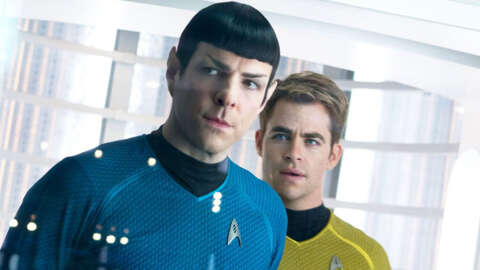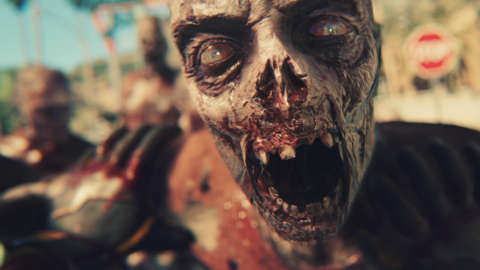Punching Nazis was what superheroes were all about.
As bombastic and glamorous as superheroes may be, they come from decidedly humble beginnings. The first generation of caped crusaders—the “Golden Age of Comics” in the 1930s and 1940s—were created almost entirely by Jewish writers, artists, editors and publishers, born to immigrants or immigrants themselves from Eastern Europe, largely young and poor, from New York’s Lower East Side and the Bronx.
With the Great Depression going on work was scarce, and respectable creative industries like advertising and publishing excluded or limited Jews. But dime novels and pulp magazines were lowly enough to let them in, and it’s from these that comic books were born. It was an industry of their own.
Initially comics were mostly humorous (hence “comics”), with the occasional adventure or detective story. But with the rise of Nazism, creators fashioned personal avatars to fight back through their fiction against the real-life supervillains. Their superheroes were tools of self-expression as well as propaganda figures, advocating for British rearmament, intervention, refugee asylum, racial tolerance, and the New Deal. But mostly, they punched Nazis.
This fascinating origin story, as colorful and exciting as the ones from the comics, is one of the themes of a new exhibition, JewCE: Jewish Comics Experience, of which I’m co-curator, at the Center for Jewish History in New York City. It opened October 9, 2023, and runs through the end of the year.
The exhibit includes a large collection of original artworks, rare historical artifacts and interactive installations, exploring the Jewish history of the comics artform and industry, Jewish themes in comics (superheroes and otherwise), and Jewish representation in comics.
Opening Shot: Superman vs. The SS
Though Captain America famously punched Adolf Hitler on the cover of his first issue, it was Superman who was the first to take on the Nazis.
Created by two teenagers, Jerry Siegel and Joe Shuster, the Man of Steel—or as he was originally known, Champion of the Oppressed—was inspired by a range of influences, from pulp adventurers like Tarzan to Jewish figures of legend like Samson, but a main impetus for creating him was the rise of Nazism. “The world was in pretty bad shape… Nazism was rising up and millions of innocent people were being killed,” Siegel remembered in an interview for the BBC. “I felt that the world desperately needed a crusader, if only a fictional one.”
One of the artifacts on display at the exhibit is an issue of Look magazine from February 27, 1940. Published almost two years before the US entered World War II, at a time when 93% of Americans opposed intervention, it features a two-page comic by Siegel and Shuster titled “How Superman Would End the War.”
In it, Superman declares war on Hitler and Joseph Stalin (the two were allies at the time, following the Molotov–Ribbentrop Pact). He storms through the impregnable Siegfried Line, twisting canons like pretzels and swatting planes like flies, grabs Hitler by the throat, then drags him and Stalin to stand trial for war crimes before the League of Nations in Geneva.
It’s great wish-fulfillment, but it’s just a kids character in a playful consumer magazine story. Who cares, right?
The Nazis cared. They cared enough that the “Das Schwarze Korps” (“The Black Corps”), the official newspaper of the SS, published a full-page tirade accusing Superman of being a Jewish conspiracy to brainwash American youth with false Jewish values. For the Nazis, who followed a warped version of Nietzsche’s Übermensch philosophy that called for the strong to rule over the weak, “Superman’s sense of justice… sows hate, suspicion, evil, laziness, and criminality” in children. (You can read the whole bonkers thing here.)
According to popular but apocryphal legend, the article was written by none other than Joseph Goebbels, the Nazi minister of propaganda. There’s also a tale about Goebbels having a conniption about Superman in the middle of a Reichstag meeting. Either way, the article was widely reported on in the US.
Siegel and Shuster got hate mail from the German American Bund, which also picketed the offices of National Allied Publications (better known as DC today). The threat was real, but all it succeeded in doing was galvanize the creators even more.
Superman continued to battle and humiliate Nazis (more on his covers than in the actual stories, but that’s a story for another time), until in Superman #25 Siegel and Shuster spoofed the SS article directly. The story features the superhero Geezer, the most popular comic book character in Superman’s world, a musclebound simpleton who looks and behaves like the article described him, whose Nazi-bashing exploits have made Hitler “the laughingstock of the world.”
Infuriated, Nazi agents try to kill the comic’s creator, but are thwarted by Superman, dressed like Geezer—a delightful layer cake of fantasy pretending to be the reality, in fantasy, created in reality….
Superman on the Frontlines
It’s hard to appreciate how impactful all this was from today’s perspective, but back then Superman was the biggest game in town. The Superman book—the first comic to feature just one character—sold 1.3 million copies monthly (to compare, Diamond Comic Distributors’ bestselling comic of 2021 was Boom’s “House of Slaughter #1,” with about 481,000 issues). The nationally syndicated Superman newspaper strip appeared in 230 newspapers. In September 1939, just 15 months after his debut, Time magazine dubbed Superman “the No. 1 juvenile vogue in the U.S.”
While he fought the Axis in his comics, in the real world the American government used Superman to promote enlistment, blood donations, paper and metal drives and war bonds and stamps sales. His popularity as a propaganda figure rivaled that of Uncle Sam, allowing him to reach strategic demographics like Japanese-Americans, who were less eager to serve a country that was interning them in camps, in publications like Rafu Shimpo (Los Angeles Japanese Daily News.)
Also shown at the JewCE exhibit, for the first time anywhere, are formerly classified US Air Force photos of WWII “Superman” bomber planes.
Once the US joined the war, with half of all servicemen reading comics, Superman became a mascot of the Armed forces. Army tanks and jeeps, Navy boats and especially Air Force planes were named after him and decorated with his image. The USAF Reserve 33rd Bombardment Squadron made him their official insignia.
With American forces carrying his comics in their rucksacks and his image on their vehicles, Superman, and through him Siegel and Shuster, were right there on the frontlines, fighting Nazis.
The Greatest Nazi-Smasher: Captain America
What Superman started, Captain America perfected, becoming the patriotic and antifascist superhero ideal to this day.
The Sentinel of Liberty was created by 27-year-old Joe Simon (Hymie Simon) and 23-year-old Jack Kirby (Jacob Kurtzberg), who, like Siegel and Shuster, created a personal avatar in response to Nazism. “We knew what was going on over in Europe,” Simon said. “World events gave us the perfect comic-book villain, Adolf Hitler, with his ranting, goose-stepping and ridiculous moustache. So we decided to create the perfect hero who would be his foil.”
“Captain America was myself,” Kirby agreed. “Captain America was my own anger coming to the surface.”
On display at the exhibit is Joe Simon’s painting recreation of the cover for Captain America Comics #2, the only one of its kind and shown in public for the first time, courtesy of Joe’s grandson, Jesse Simon.
As mentioned, the first issue showed Cap punching Hitler right on the cover. Published by Timely Comics (Marvel today), it was cover-dated March 1941 but distributed on December 20, 1940, a full year before Pearl Harbor. At that time, the vast majority of the American public was staunchly against entering the war, and there was great political pressure on the entertainment industry to avoid offending Germany and its stateside supporters. The comic was nothing short of a brazen act of defiance and courage.
There was significant backlash, especially by the Bund (which wasn’t some ragtag margin group; they had just held a rally in New York’s Madison Square Garden of more than 20,000 members). Timely was flooded with hate mail and death threats.
Simon and Kirby ignored them, but once groups of men started waiting for them outside the office building, they called the police. The news reached all the way up to New York Mayor Fiorello La Guardia, a huge comics fan (and unbeknownst to most, even to this day, Jewish), who called them back personally. “You boys over there are doing a good job,” he assured them. “The City of New York will see that no harm will come to you.” A police guard patrolled the Timely offices from there on out.
Holocaust Awareness
Even after Simon and Kirby left Timely (following a dispute with publisher Martin Goodman), Captain America continued to serve as a propaganda figure, fighting Nazis and promoting war bonds and stamps.
Perhaps the most noteworthy example is the cover of Captain America Comics #46, also at the exhibit. While the American press by and large toned down or altogether ignored the ongoing Holocaust, the cover showed tagged inmates marched at gunpoint to giant ovens, with human remains sticking out of the ashes. It’s a graphic, horrific scene, especially for a kids comic book. But it was a way to reach and inform the public.
Politicking Through Punching
Virtually all Golden Age superheroes enlisted to fight the Axis, both in the fiction of their stories and the reality of public opinion.
It’s not that they were used to respond to Nazism; many were created as a response. They fought with a mix of solemn consecration, righteous anger and cathartic glee. It was politicking through punching, a perfect reduction of the argument to simplistic and binary—though by no means false—choices: to oppose the great evil, or to not.
“I don’t know anybody who doesn’t like the story of Superman,” Dr. Magdalena Wrobel, Associate Director of Public History at the Leo Baeck Institute and JewCE Co-Curator, said. “The exhibit shows examples from comic books and explains why their authors felt compelled to engage in the fight against the Nazis in the 1940s, teaching visitors something valuable.”
This legacy, as relevant today as it ever was, is just one of the themes explored at the JewCE: Jewish Comics Experience exhibit. “Visitors are presented with the historical origins of the superhero genre,” said Dr. Miriam Eve Mora, Director of Academic and Public Programs at the Center for Jewish History and Managing Curator of the exhibit, “and how Jewish creators were at the forefront of the comics industry, how Jewish stories formed the core of the comic book medium, and how diverse and fascinating Jewish ideas, characters, and narratives are coming though on the page.”
So if you’re in New York (and especially if you’re attending New York Comic Con, only a few blocks away), stop by. The exhibit is free, but the new perspective it will give you on your favorite superheroes is priceless.
Roy Schwartz is a pop culture historian and critic and co-curator of the JewCE: Jewish Comics Experience exhibit. His work has appeared in CNN.com, New York Daily News, The Forward, Literary Hub, and Philosophy Now, among others. His latest book is the Diagram Prize-winning Is Superman Circumcised? The Complete Jewish History of the World’s Greatest Hero. Follow him on Twitter, Instagram and Facebook and at royschwartz.com.





